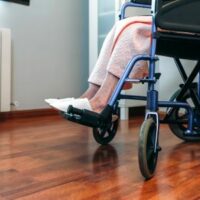Common Nursing Home Abuse Injuries

If you have a loved one in a nursing home, it is essential that you know the common signs of nursing home abuse so you can spot it and put an end to it. One of the ways to spot the signs is by knowing the common injuries caused by nursing home abuse so you can recognize them when they occur. Below, our Tampa nursing home abuse lawyer outlines the common injuries suffered by nursing home residents.
Bed Sores
When skin, bone, and tissue are under pressure and constantly rub against other surfaces, such as beds and wheelchairs, bed sores can result. Bed sores are extremely painful and once they open, they can expose the tissues under the skin. Nursing home staff members must regularly reposition residents when they are bound to a wheelchair or bed to ensure that bed sores do not develop. The most common locations for bed sores to develop are the buttocks, heels of the feet, shoulder blades, back of the head, and back and sides of the knee.
Injuries from Falls
Bruising, cuts, broken bones, head injuries, and spinal injuries are just a few a nursing home resident can suffer when they fall. Falls are particularly dangerous for the elderly. Studies have shown that an elderly individual is three times more likely to die after a fall than a younger person. The staff in nursing homes must ensure they are assisting residents when necessary and that all areas are free of hazardous conditions that could cause a fall.
Malnourishment Injuries
Sadly, nursing home residents suffer from malnourishment for a number of reasons. Staff members may withhold food as a form of punishment, or they may not provide food that contains the proper nutrients for residents. Other times, staff members may not properly assist residents or feed them inappropriate food, such as not following a liquid diet an elder needs. The signs of malnourishment are brittle bones, weight loss, dehydration, dizziness, and fatigue.
Injuries from Use of Restraints
Restraints in nursing homes fall into two categories: physical and chemical. Physical restraints are those that are used to physically keep a resident in one place. Chemical restraints refer to drugs that are meant to incapacitate a resident. Cuts, bruises, and even potentially broken bones around the ankles and wrists are one sign of physical restraints. If a resident seems drowsy or incoherent, it could mean chemical restraints were used. In the most tragic of cases, chemical restraints can also cause an overdose. Nursing homes are only allowed to use restraints in extremely limited circumstances.
Our Nursing Home Abuse Lawyer in Tampa Can Help After an Injury
If you suspect that your loved one has been abused in a nursing home facility, you need sound legal advice. At Kohn Law, our Tampa nursing home abuse lawyer can help you file a claim for compensation that will allow your family member to make a full recovery, while helping you keep your loved one safe. Call us today at 813-428-8504 or contact us online to schedule a free consultation.
Sources:
leg.state.fl.us/statutes/index.cfm?App_mode=Display_Statute&URL=0400-0499/0400/0400.html
ncbi.nlm.nih.gov/books/NBK235613/
